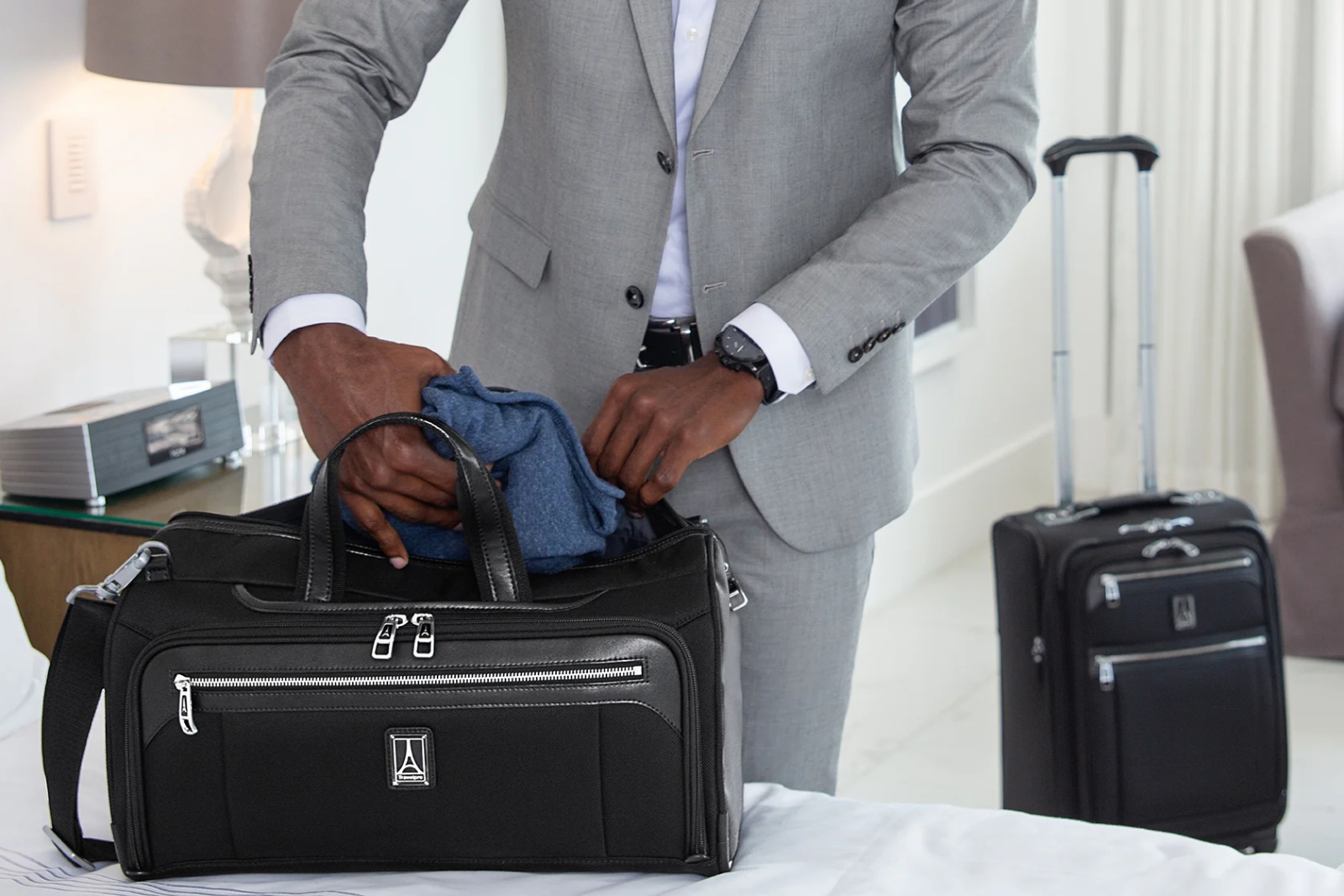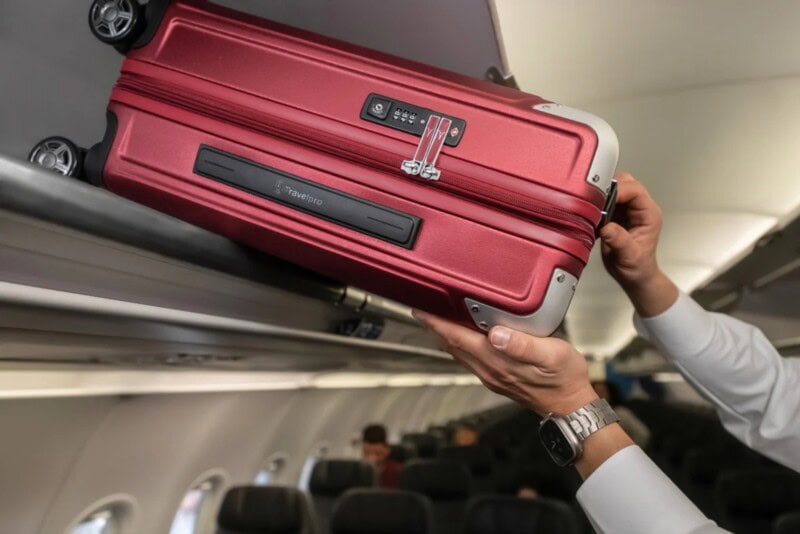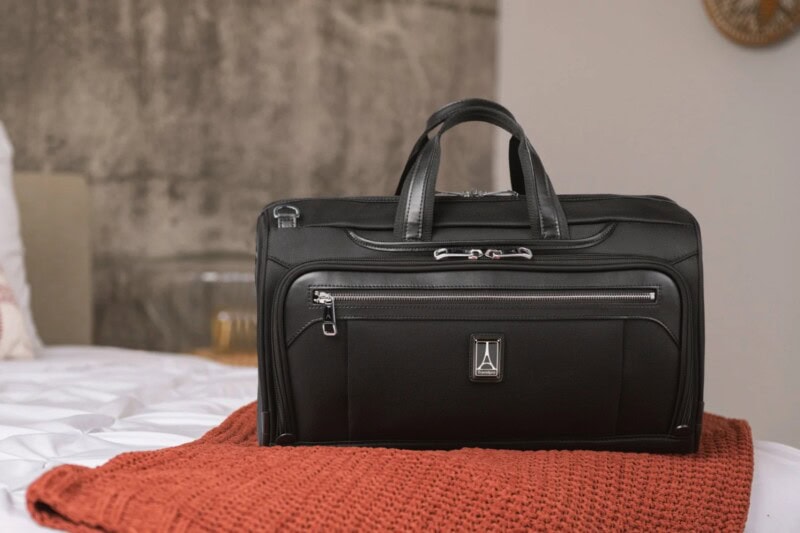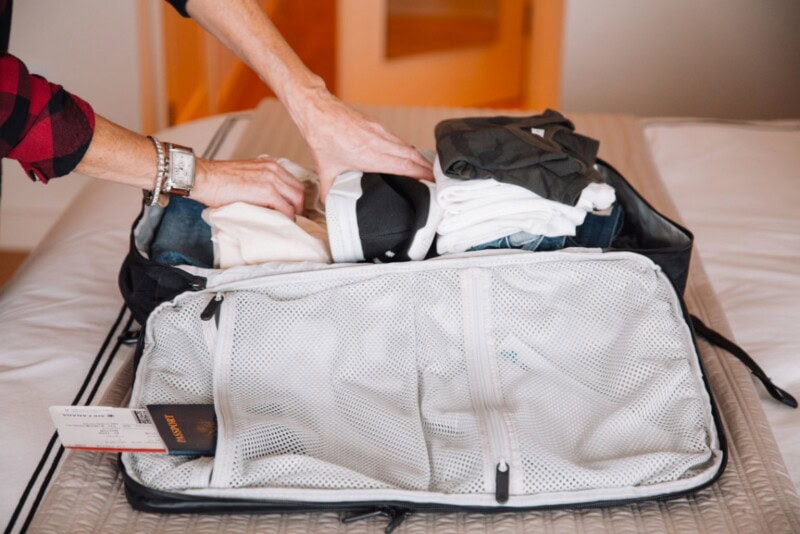
Most airlines allow you to board with one carry-on bag and one personal item. By understanding the differences between them, you can make the most of your limited packing space.
Generally, a carry-on is a small suitcase or bag that fits in the overhead bin, while a personal item is something smaller, like a backpack, purse, or laptop bag, that must fit under the seat in front of you. Each airline has specific size and weight limits for these items, and knowing these rules beforehand can save you from unexpected hassles or fees at the airport.
I researched the carry-on and personal item requirements for 175 airlines from around the world, to create this comprehensive guide.
I’ll walk you through the differences between a carry-on and a personal item, and then I’ll give you some helpful packing tips to help you get the most out of your carry-on and personal item.
What is a Carry-On Bag?

A carry-on bag is a type of luggage designed to fit within an airplane’s overhead bin. Unlike checked luggage, you keep your carry-on with you the entire time through the airport and during layovers. Because of this, your carry-on luggage is a great place to keep items you want with you while traveling.
Carry-on luggage will be bigger than your personal item. Your carry-on can be a suitcase, backpack, duffel, or any other bag that fits within the size restrictions.
Carry-On Size Limit
Because carry-ons have to fit in the overhead bin, airlines have very specific restrictions on how big they can be. Carry-on size limits are usually defined by a certain height, width, and depth, and your bag has to fit within each of those dimensions.
For domestic flights within the US, the most common size limit is 22 x 14 x 9 inches. Some airlines, like Frontier and Southwest, allow larger bags, but that size is a good rule of thumb to follow.
International airlines have slightly different limits (because they use centimeters). 21.6 x 15.7 x 9 inches (55 x 40 x 23 cm) is the most common size, but each airline sets its own restrictions.
International flights also often have strict weight limits for carry-on luggage, so it’s a good idea to weigh your carry-on once it’s fully packed.
Types of Carry-On
When you think of a carry-on, you may picture a small rolling suitcase, but really any bag can work as your carry-on as long as it fits in the size limits. Here are some common choices for a carry-on bag.
- Hardside Suitcase: These are sturdy, stylish, and very popular. They usually roll on four 360-degree spinner wheels, and they’re great for keeping your stuff protected and secure.
- Softside Suitcase: These are more flexible and lighter, and they usually have more pockets for keeping things organized. They can have either two wheels (stronger) or four wheels (more maneuverable).
- Travel Backpack: While rolling suitcases are convenient, nothing beats the go-anywhere ability of a backpack. If your travels involve lots of walking, especially over rough surfaces or up and down stairs, a backpack is a great choice.
- Duffel Bag: These are simple, durable, and easy to pack. A duffel bag is great for hauling a lot of gear, but because you have to carry it in one hand or over one shoulder, it isn’t ideal for walking long distances.
- Garment Bag: If you are traveling with a suit or dress, a dedicated garment bag can make sure it arrives at your destination crisp and uncrumpled.
How to Choose a Carry-On Bag
If you’re in the market for a new carry-on bag, you should first research the size restrictions to determine what size your carry-on should be. Remember, domestic flights have different limits than international flights, and every airline create’s its own restrictions.
Research all the airlines you plan to fly with, and choose the smallest size limits, that way your bag will work for all of them.
Once you know how small your carry-on has to be, you need to decide how you want to carry and move it around.
Wheeled luggage is convenient for rolling around the airport because you don’t have to carry the weight around yourself. However, suitcase wheels only work well on smooth paved surfaces. If your trips involve lots of walking outside, especially over rough surfaces or up and down stairs, a backpack is a much more capable option that can go anywhere.
You should also choose a bag that’s easy to pack. Whether you pick a backpack, suitcase, or duffel, I recommend finding one with a big zippered clamshell or panel opening. This gives you easy access to everything inside and means you can pack your bag the same way you would put clothes into a drawer.
What is a Personal Item?


A personal item is typically a smaller bag or possession that you can bring on board in addition to your carry-on bag. This item should be compact enough to fit beneath the seat in front of you.
Personal items can include purses, backpacks, or laptop bags. You should use your personal item to store travel documents, snacks, electronics, books, and anything else you may want during your flight.
Personal Item Size Limits
Airlines usually have clearly defined size restrictions for personal items to ensure everything fits comfortably in the cabin. Most US-based domestic airlines agree on a standard size cap around 18 x 14 x 8 inches.
International flights often have tighter limits. The most common personal item size for international flights is 15.7 x 11.8 x 3.9 inches.
Types of Personal Items
You have a lot of options to use as your personal item. Again, as long as it fits in the size limits (and isn’t dangerous), pretty much any bag will do the job.
- Purse or messenger bag: This is the classic choice for a personal item bag. You can keep essentials within reach without taking up too much space.
- Travel daypack or laptop backpack: A small backpack is a good choice for a personal item if you’ll be carrying it around a lot. Plus, you can use it for day trips once you get to your destination.
- Laptop bag or briefcase: Ideal for business travelers in need of quick access to their work tools.
- Small duffel bag or tote: Yes, a duffel bag can count as a personal item as long as it fits within the size limits. This is a good option if you need an extra bit of space for clothing or toiletries.
How to Choose a Personal Item
Choosing the right personal item is all about balancing space and functionality. You want one that carries everything you need it to, but also remember that it has to work as a compliment to your main carry-on bag. Here are some factors to consider:
- Size Compatibility: First and foremost, ensure the personal item adheres to your airline’s specific size requirements.
- Contents: Consider what you intend to carry. For transporting electronics, opt for a well-padded laptop bag or backpack. If not, a more compact and foldable bag may suffice.
- Convenience: Contemplate how you will manage both your carry-on and personal item. Some personal items are designed with straps to attach to the handle of a rolling suitcase for easier transport.
Tips for Packing Your Carry-On and Personal Item


Making the most of your carry-on and personal item starts with smart packing. Each bag should be used for a specific purpose, and they should work together in tandem as you travel.
Here are a few tips on what to pack in each and how to organize them to streamline your trip.
Your Carry-On and Personal Item Should Complement Each Other
Once you have your carry-on bag, choose a personal item that will work well with it.
If you’re using a carry-on backpack, you probably don’t want your personal item to be a laptop backpack. How would you carry them both? Instead, a small shoulder bag or even a fanny pack (gasp!) would work a lot better.
If you’re using a classic wheeled suitcase as your carry-on, a small backpack would be a perfect personal item because it keeps your hands free.
What to Pack in Your Carry-On
Your carry-on is stowed in the overhead bin, so it should contain items you won’t need during the flight. Pack non-essential bulkier items such as clothes, extra shoes, and toiletries here.
Remember that you won’t always be able to get to your carry-on during the flight, so keep anything you might need in your personal item.
What to Pack in Your Personal Item
Pack your personal item with things you’ll want quick access to during the flight, such as snacks, a refillable water bottle, personal entertainment devices, and chargers. This is also a great place for travel documents, medications, and an extra layer of clothing in case the airplane is a bit chilly.
I recommend keeping your personal item small and light, with everything else packed away in your carry-on. That way, you aren’t taking up valuable space you could use to stretch out your legs.
Use Both Bags to Stay Under the Weight Limit
Airlines often enforce specific carry-on weight limits, and if your main bag is over the limit, you could shift some smaller, heavier items like a laptop, hardcover books, or a camera into your personal item.
By doing this, you not only lighten your carry-on but also ensure that your most valuable possessions remain with you during the flight.






